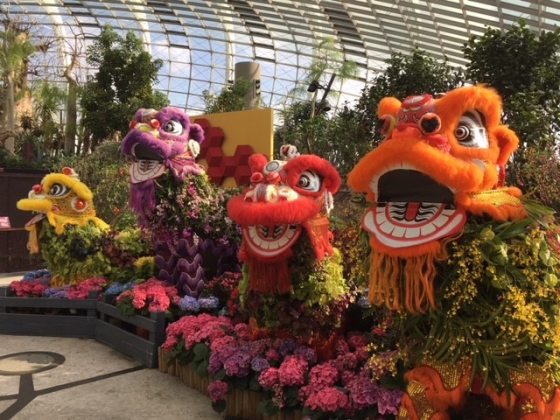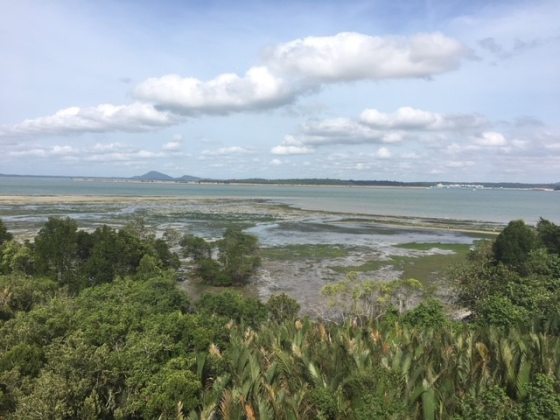As nature is ever-evolving and multi-faceted, so is the operation of gardens themselves. As part of the Longwood Gardens Fellows Program, our Fellows spent two months at individual field placement sites across the globe to learn from thought leaders, as well as to share and grow their own expertise.
From developing long range master planning for Singapore’s urban park system to creating a cohesive mission and vision for a 16th-century French Renaissance garden, our Fellows devoted their time learning about and contributing to their host organizations’ structure, culture, and approach to staff management and leadership.
Hear from the class of 2018 as they detail their experiences and discoveries made at their host organizations.
Julia Thomé
Singapore National Parks Board, Singapore
Since the vision for a garden city was conceived in the 1960s, Singapore has truly become a city-in-a-garden. The Singapore National Parks Board (NParks) has been the driving force in the city’s transformation, with its now verdant streetscapes and its many parks and gardens, including the Singapore Botanic Garden, a UNESCO World Heritage Site. Not only are NParks staff gardening around the city, but thousands of individuals and community groups, and their many thousands of green thumbs, are greening the areas in and around housing developments, schools, community centers, businesses, and places of worship. There are more than 1,300 community gardens featuring ornamental plantings, edibles, and natural landscapes to improve biodiversity, which also serve as host to a wide range of community activities delivering a multitude of benefits ranging from education, volunteering, arts, and culture to nutrition, therapy, and other aspects of community wellness.
My focus with the NParks’ Horticulture and Community Gardening Division was to contribute to long-range master planning as well as more immediate program planning in support of the idea that “everyone can garden,” the ever-growing gardening movement. In my planning efforts, I focused on improving and expanding the role and site features of HortPark, a 10-hectare park that serves as a “one-stop gardening resource center that brings together gardening-related, recreational, educational, research, and retail activities under one big canopy in a park setting.” Acknowledging my outsider’s fresh set of eyes, NParks welcomed my ideas and perspectives in the planning process. I was even able to use my “phone a friend” option while I was there, calling on Longwood colleagues for specialized input and feedback on items such as trial gardens and interpretation.
In addition to learning about a plethora of best practices in urban garden programming and site development, it was an incredible learning opportunity for me to experience leadership in a diverse, multicultural setting; the ins-and-outs management of a sophisticated urban park system; and its vision for the future. I will carry this learning forever forward in my career.
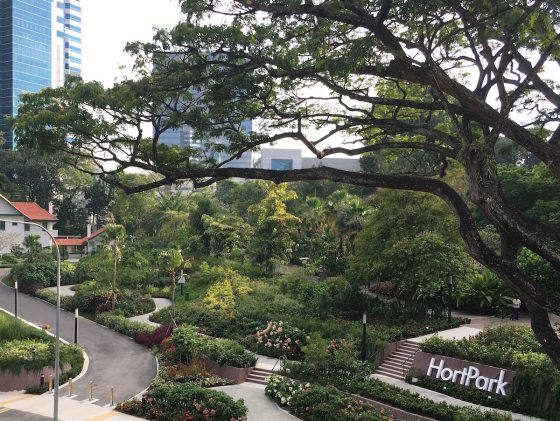

Patrick MacRae
Waddesdon Manor, United Kingdom
My field placement experience at Waddesdon Manor in Buckinghamshire, UK, was one of the highlights of my time in the Longwood Fellows Program, and a fitting opportunity to apply all that I have learned at Longwood in a real-world context. Waddesdon is a fascinating organization. Built by Baron Ferdinand de Rothschild from 1874–1885 in the style of a 16th-century Loire Valley Chateau, Waddesdon houses one of the world’s richest collections of 18th-century French decorative arts. The gardens and grounds represent a fine example of Victorian garden design, and the horticultural style at Waddesdon reflects the history of Rothschild innovation. The property is owned by The National Trust and managed by the Rothschild Foundation under the tutelage of the 4th Baron Lord Jacob Rothschild.
My task at Waddesdon was to begin developing a strategy to elevate the profile of the gardens relative to the rest of the property. For much of the year the manor is closed to the public, so the main draw is the garden itself. I saw substantial opportunity in developing the gardens, keeping in mind the spirit of Baron Ferdinand’s original design, while providing a year-round garden experience separate from other Victorian properties in England. To that end, I worked with the Gardens Manager, Mike Buffin, and garden designers to strategize a horticultural plan to meet those objectives. I also curated and produced an online tree trail to begin interpreting the significance of Waddesdon’s Victorian landscape while educating its visitors about the fascinating botanical legacy of the Victorian era.
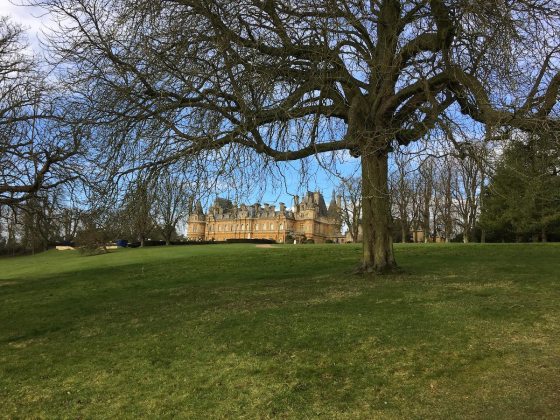
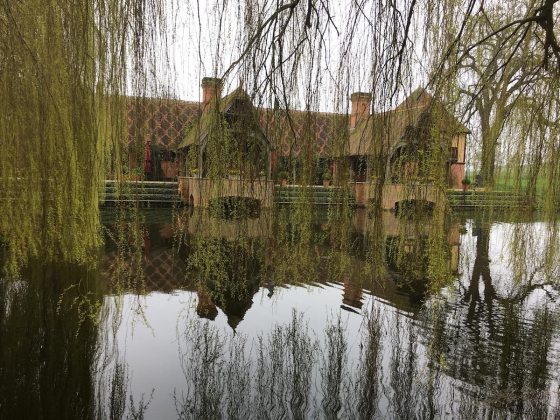
Neil Gerlowski
Villandry Château, France
My field placement at Villandry Château and Garden in France’s Loire Valley was one of the most incredible learning experiences of my Fellowship. To provide some context on the setting, in the early 20th century, Villandry became the first historic property in France to restore a Renaissance garden back to its former 16th-century glory. Today, Villandry’s Gardens continue to delight and fascinate hundreds of thousands of guests every year.
The projects that I completed during my time at Villandry included research and recommendations on topics ranging from organizational strategy to horticulture and from capital improvement to marketing. The wide array of assignments allowed me to work collaboratively with garden staff and administration, including Director of Villandry Henri Carvallo. One of my projects was to draft a cohesive written mission, vision, and values for the organization that best serve the community while conserving the rich history of the property and its gardens. Knowing afterwards that my work has the potential to effect positive change on one of the great historic gardens of the world is an extremely satisfying accomplishment.


Kaslin Daniels
Gardens by the Bay, Singapore
I had the profound pleasure of spending eight intensive weeks immersed in Singaporean culture and putting the curriculum and leadership lessons I have gained throughout the Fellows Program to task. This component of the Fellows Program was undoubtedly a crucial experience for my personal and professional growth, with innumerable lessons learned and professional connections made. My placement at Gardens by the Bay was split between high-level organizational exposure and project-based work. Throughout my eight weeks, I rotated among the different programming teams—education, membership and volunteers, and festivals—and operations, including conservatory, research, and outdoor gardens. The project I was tasked with, in collaboration with the science interpreter and resident architect, was to create an interpretation plan for a new attraction that is currently under construction.
I had the unique opportunity to discuss the organization with all levels of staff as well as external stakeholders, from senior management to front-line staff, volunteers, and visitors. I attended school programs, departmental planning workshops, meetings with contractors, volunteer work sessions, and garden installations. I shadowed staff in their day-to-day tasks as well as met with them individually to better understand their responsibilities more broadly.
